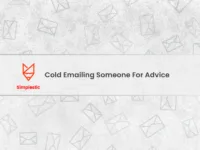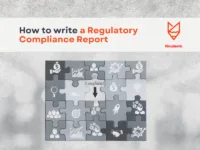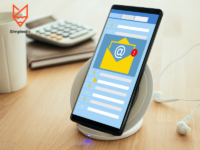Writing a strong subject line for a meeting request can make a big difference in whether people will open your email. A clear and concise subject line that includes the meeting’s purpose and date is key to grabbing attention. This helps the recipient understand the importance of the meeting right away.
When crafting your subject line, keep it specific. Instead of vague phrases, use details like “Budget Review Meeting – October 5” to provide context. This clarity can also encourage a quicker response. You want your meeting to be prioritized among many other emails.
Essentials of an Effective Subject Line
A strong subject line makes your meeting request clear and engaging. It captures attention and encourages recipients to open your email. Here are some key aspects to consider.
Brevity and Clarity
Keep your subject line short and to the point. Aim for 5-7 words. This ensures recipients can quickly grasp the purpose. Avoid using complex language or jargon.
Include essential details. Mention the meeting type, date, and time if possible. For example, “Team Update Meeting – Sep 30 at 10 AM” provides clarity.
Clear subject lines help organize emails. This makes it easier for recipients to find your message later. Concise and direct communication shows professionalism.
Personalization Techniques
Make your subject line personal for better engagement. Use the recipient’s name when you can. For example, “John, Let’s Discuss Project Updates.”
You can also mention specific topics relevant to the recipient. This adds a personal touch and shows you value their time.
When possible, personalize based on previous conversations. Reflecting on shared interests or actions enhances connection. It’s a simple way to make your email stand out in their inbox.
Incorporating Urgency and Relevance
Creating a sense of urgency can prompt quicker responses. Use phrases like “Request for Quick Meeting” or “Important – Please Respond ASAP.”
Ensure the subject line reflects the meeting’s relevance. Highlight its importance by using words like “Critical” or “Time-Sensitive.”
Also, consider the context. If a deadline is approaching, mention it. For example, “Final Review Needed Before Oct 5” clearly indicates urgency. This approach encourages your recipients to prioritize your email over other tasks.
Understanding the Audience
Knowing your audience is key to writing an effective meeting request. Consider cultural differences and workplace hierarchy. These factors can greatly influence how your message is received.
Cultural Considerations
Different cultures have unique communication styles. For example, some cultures prefer direct communication. Others value a more formal approach.
Tips for Cultural Sensitivity:
- Research: Understand your audience’s cultural background.
- Language: Use clear and polite language, avoiding slang or idioms.
- Tone: Match the level of formality appropriate for the culture.
Being mindful of these differences can help you craft a subject line that resonates well with your audience.
Hierarchy and Professional Standing
Recognizing the hierarchy in your workplace is crucial. The way you address someone can affect their response. For instance, your subject line might differ based on the recipient’s position.
Key Points to Consider:
- Titles: Use proper titles for senior staff.
- Tone: A formal tone works best with higher-ups.
- Clarity: Ensure the purpose is clear to respect their time.
Understanding these dynamics will help you create an effective meeting request that gets the attention it deserves.
Strategic Keyword Usage
Choosing the right keywords for your meeting request can make a big difference. Focus on action-oriented verbs and clearly state the purpose of the meeting to grab attention.
Action-Oriented Verbs
Using action-oriented verbs in your subject line can motivate your audience to take notice. Words like “Discuss,” “Review,” and “Finalize” suggest that a clear outcome is expected. This approach sets an active tone, encouraging recipients to feel involved.
Consider this list of effective verbs:
- Schedule
- Collaborate
- Plan
- Analyze
These words clearly indicate what you want to achieve. They help recipients quickly understand what to expect from the meeting.
Try to keep your subject line concise yet powerful, creating a sense of urgency without sounding pushy.
Significance of Meeting Purpose
Clearly stating the meeting’s purpose is essential. It helps the recipient know why attending is important. You can make this clear using specific details.
For example, rather than saying “Meeting,” try “Budget Review Meeting.” This directly states the topic and highlights its importance.
Adding details, like the primary agenda or outcomes, further clarifies the meeting’s value.
Here are some effective phrases to consider:
- Project Update on…
- Strategy Session for…
- Training on…
This specificity provides the reader with context. It also encourages them to prioritize their attendance. Use simple, clear language to describe what you will cover. This will enhance your chances of a positive response.
Subject Line Formatting
Proper formatting of your subject line can make a positive impression. It enhances clarity and helps the recipient understand the purpose of the meeting quickly. Pay attention to capitalization and use of numbers and dates to create an effective subject line.
Capitalization Rules
Using correct capitalization in your subject line is crucial. An effective way is to capitalize the first letter of each major word. This includes nouns, pronouns, verbs, adjectives, and adverbs. For example, “Team Meeting About Project Update” is more readable than “team meeting about project update.”
Avoid capitalizing minor words unless they appear at the beginning. This includes words like “and,” “but,” “or,” “for,” and “to.” Here’s a quick guide:
- Capitalize: Nouns, Verbs, Adjectives
- Don’t Capitalize: Prepositions, Articles, Conjunctions
Using this guideline helps your subject line look professional and organized.
Use of Numbers and Dates
Incorporating numbers and dates can provide clarity. They help the recipient quickly understand when and what the meeting is about. For instance, “Meeting on September 29, 2024” is direct and informative.
If you include steps or phases, numbered lists can be effective. For example, “1. Initial Discussion, 2. Feedback Session.” This format makes it easier for the reader to understand the agenda.
Make sure to use the full date format for clarity, like “September 29, 2024,” instead of just “9/29.” This avoids confusion, especially in international contexts. By following these tips, your subject line will grab attention and convey professionalism.
Common Mistakes to Avoid
When crafting a subject line for a meeting request, it’s important to avoid certain pitfalls. These mistakes can lead to confusion and decreased response rates. Focus on clarity and professionalism to enhance your communication.
Overuse of Capitalization
Using too many capital letters in your subject line can make it hard to read. It may also come across as shouting, which can be off-putting.
Instead, stick to standard capitalization rules. For example, capitalize only the first letter of the first word and any proper nouns. A subject line such as “Meeting Request: Project Updates” is clear and professional. Remember, simplicity is key.
Ambiguous Language
Avoid vague language that doesn’t specify the purpose of the meeting. Phrases like “Let’s talk” or “Important discussion” do not provide enough information. This can cause confusion and uncertainty.
Instead, be direct and clear. Use specific terms that highlight the meeting’s intent. For instance, “Review Marketing Strategy for Q4” clearly states the topic. It allows recipients to understand the meeting’s importance and prepare accordingly.
Excessive Length
Keep your subject line short and to the point. Long subject lines can be cut off in email previews, which may lead to missed details. Aim for 50 characters or less to ensure the message is clear.
Use concise wording to convey your message effectively. For example, “Team Meeting: Budget Review on Oct 5” is informative without being overwhelming. This approach helps recipients quickly grasp the meeting’s purpose and urgency.
Testing and Refining Subject Lines
To create effective subject lines, you can test different options and gather feedback. This helps you understand what works best for your audience. Focus on methods that can provide clear insights and improve your email engagement.
A/B Testing Methods
A/B testing involves creating two different subject lines for the same email. You send each version to a small portion of your audience. Monitor which subject line gets a higher open rate.
- Create Variants: Make sure the subject lines are different enough to see a clear preference.
- Choose Your Audience: Select a representative sample of your total audience.
- Analyze Results: After testing, evaluate which line performed better and consider using it for the entire group.
This approach allows you to make data-driven decisions and refine your subject lines based on real feedback.
Feedback Collection
Gathering feedback can be another way to improve your subject lines. You can ask recipients how they feel about the emails they receive.
- Surveys: Send quick surveys after your emails to find out what recipients think about the subject line.
- Comments: Encourage replies from recipients about what they liked or didn’t like.
- Open Rates: Pay attention to open rates for various emails to see what draws interest.
Using feedback helps you adjust your strategy and tailor your subject lines to better suit your audience’s preferences.
Subject Line Examples
Choosing the right subject line for a meeting request can set the tone and increase the chances of a prompt response. Here are examples focused on professional invitations and creative approaches.
Professional Invitations
When sending meeting requests in a work setting, clarity is key. Use straightforward language that clearly states the purpose and urgency. Here are some examples:
- “Meeting Request: Project Update on [Project Name]”
- “Schedule a Meeting to Discuss [Topic]”
- “Invitation: Quarterly Review Meeting”
These subject lines show the recipient what to expect. They help your email stand out in a busy inbox. Use specifics such as dates and times for added clarity:
- “Meeting Request for Oct 5 at 2 PM: Marketing Strategy”
This direct approach lets the recipient know the importance of the meeting. It helps them prioritize their response.
Creative Approaches
For a less formal setting, you can have some fun with your subject lines. Creativity can grab attention and make the request feel more engaging. Here are some ideas:
- “Let’s Brainstorm: Meeting Invite for [Topic]”
- “Coffee Chat? Discuss [Topic]”
- “Join Me to Explore [Interesting Topic]”
These options invite participation. They show enthusiasm and engage the recipient’s curiosity. Avoid overdoing it; keep it professional but friendly.
Mixing a personal touch with clarity can enhance responses. Your goal is to balance professionalism with an approachable tone.
55 Example Subject Lines
- Meeting Request: Project Update
- Schedule a Quick Catch-Up
- Request for Team Meeting
- Let’s Discuss Upcoming Deadlines
- Invitation to Strategy Session
- Time to Review Last Quarter’s Goals
- Follow-Up on Our Last Meeting
- Discussion on Project Progress
- Need Your Input: Team Meeting
- Coordination Needed: Upcoming Event
- Request: One-on-One Discussion
- Let’s Touch Base Next Week
- Proposal Review Meeting
- Invite: Brainstorming Session
- Meeting to Align on Goals
- Feedback Needed: Quick Chat
- Request for Status Update Meeting
- Collaboration Discussion Needed
- Let’s Plan for Next Steps
- Review Meeting: Quarterly Results
- Your Availability for a Meeting?
- Gathering Input on New Project
- Team Huddle: Important Updates
- Urgent Meeting Request
- Time for an All-Hands Meeting
- Training Session Reminder
- Invitation to Budget Planning Meeting
- Request for Department Meeting
- Discussion: Team Performance
- Coffee Chat: Project Insights
- Setting Up a Cross-Department Meeting
- Quick Sync-Up Regarding Client Feedback
- Follow-Up Meeting Request
- Discussing Project Roadmap
- Invitation: Team Collaboration
- Need Your Expertise: Join Us
- Request: Meeting to Review Policies
- Proposal Discussion Needed
- Schedule a Check-In
- Conference Call Invitation
- Aligning Our Objectives
- Meeting Request: Initiative Overview
- Setting Up a Monthly Review
- Planning Session Invite
- Discuss: New Responsibilities
- Need to Confirm Meeting Time
- Syncing Up with the Team
- Team Feedback Session Invitation
- Review and Discuss: Action Items
- Let’s Talk About Performance
- Request for Stakeholder Meeting
- Time to Review Your Project
- Planning Our Next Steps
- Discussion on Team Dynamics
- Your Thoughts Needed: Important Meeting
Next A list os statements -professional ways- to ask someone to confirm meeting attendance:
Direct and Professional
- Could you please confirm your attendance at the meeting scheduled for [date/time]?
- Kindly confirm your availability for the upcoming meeting.
- Please let me know if you will be able to attend.
- May I ask you to confirm whether you plan to join us?
- Please confirm if the proposed meeting time works for you.
- We would appreciate it if you could confirm your participation.
- Could you let us know if we can expect you at the meeting?
- Just checking in to confirm your attendance.
- Please advise whether you will be joining the meeting.
- A quick confirmation of your availability would be helpful.
Formal and Courteous
- I would be grateful if you could confirm your attendance.
- Kindly respond at your earliest convenience regarding your availability.
- Your confirmation is requested to finalize the meeting arrangements.
- Please confirm your participation so we may proceed accordingly.
- We would appreciate a confirmation from your side by [specific time/date].
- Could you kindly acknowledge your attendance?
- Please confirm whether you will be in attendance.
- A confirmation of your availability would be much appreciated.
- We are looking forward to your response regarding your availability.
- Kindly confirm at your earliest convenience.
Time-Specific or Scheduling Context
- Are you available to attend the meeting on [date] at [time]?
- Will you be able to join us as scheduled?
- Please confirm that the proposed time is suitable for you.
- We are in the process of finalizing the meeting and would like your confirmation.
- Could you confirm if you will be available at the scheduled time?
Group or Team Context
- Please confirm whether you or someone from your team will attend.
- Kindly let us know who from your department will be participating.
- Can you confirm if there will be any other attendees from your side?
- Please confirm the list of participants from your team.
- We would appreciate it if you could confirm attendance for all relevant stakeholders.
Follow-Up and Gentle Reminders
- Just following up to request confirmation of your attendance.
- As the meeting date approaches, we would appreciate your confirmation.
- We are finalizing the agenda and kindly request your availability.
- Please confirm your attendance so we can prepare accordingly.
- A reminder to confirm your availability at your earliest convenience.
Remember, an effective subject line sets the tone for the meeting. It invites your audience to engage and prepares them for what to expect. A good subject line not only gets attention but also shows that you respect their time.




